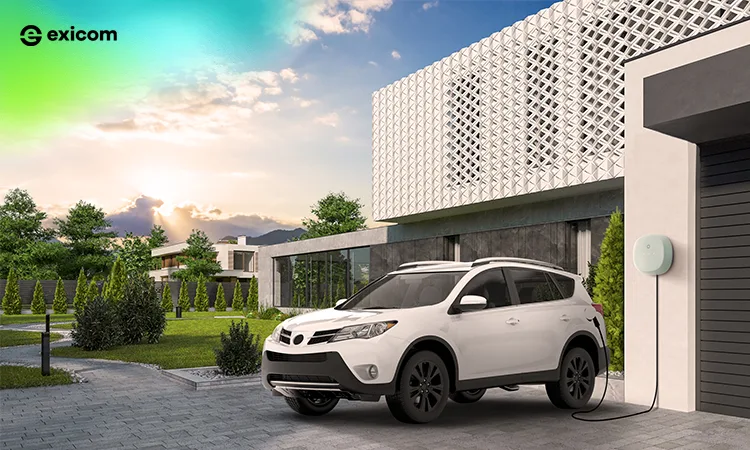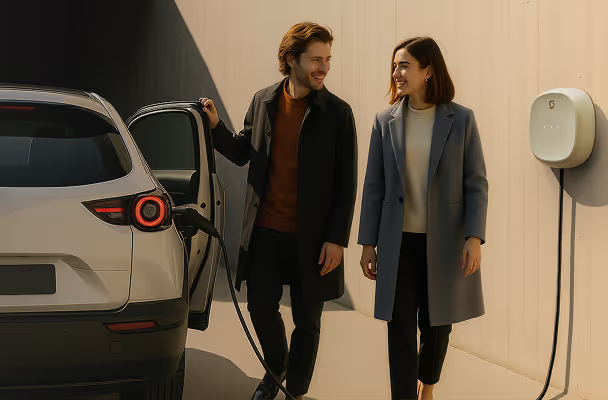Step-by-step guide to choose the right charger for your property

There is a certain quirk to being an Indian tourist. While we have been preachers of minimalism in philosophy, we are “maximum value” seekers in practice. Especially when we travel. Some of us negotiate for an early check-in, while others ask if Wi-Fi is fast enough to stream a full movie in HD. Now, as EVs join our trusted travel kit (right next to cans of chai and homemade snacks), we expect our hotels to keep up. If your parking lot can’t charge an electric car and provide a selfie spot for the whole gang, are you even a proper hotel? Expect the new-age traveler to request not just a wake-up call, but also a “charge-up call,” all before they ask for that extra towel!
More tourists are now driving EVs
India’s electric vehicle revolution is no longer a futuristic vision; it’s here, growing rapidly and transforming how people travel. In 2024 alone, over one lakh electric four-wheelers took to Indian roads, marking a 50% year-on-year growth. The government is targeting a 30% EV share by 2030, and the hospitality industry has begun to play a surprising but critical role in this transition.
The EV wave has moved beyond city streets to Indian tourism, with more travellers using electric cars. While highways are fast filling up with charging points every 40–60 km, the gap still lies in “destination charging.” With the average highway range around 300 km, travellers often reach their vacation stay needing a top-up for the return trip. Offering EV charging at hospitality properties isn’t just about convenience; it’s about trust and sustainability. Every 300 km of EV travel can avoid roughly 45 kg of CO₂ emissions, directly contributing to a property’s Scope-3 carbon reporting and ESG commitments.
A growing number of domestic tourists are taking their EVs on long trips to hill stations, beaches, and heritage sites, thanks to improving vehicle ranges and charging infrastructure. The tourism sector itself is going electric – from self-drive rental cars to local sightseeing cabs. Several car rental companies and startups (e.g. BluSmart in Delhi, EV taxis in Goa) are deploying electric fleets. Major online travel aggregators, such as MakeMyTrip, Booking.com, and Airbnb, have already added “EV charger” filters to their listings, giving properties that offer the amenity 10–15% higher visibility.
It’s not just individual travelers; corporate travel planners are also factoring in EV readiness. Many RFPs (Request for Proposals) from companies now include EV charging as a sustainability requirement.
Policies are helping create EV charging infrastructure
India’s evolving EV policy landscape is making the adoption of EVs easier for hospitality players. Several states have introduced low single-part EV tariffs, with demand charges waived in some regions. This helps reduce operating costs for properties by offering paid public access to chargers.
There are also attractive subsidies, for instance, ₹6,000 per charging point in Delhi and up to ₹10 lakh for DC fast chargers in Maharashtra, while other states provide 20–25% capital subsidies.
Regulatory codes are keeping pace, too. Many state model by-laws now require 20% of parking spaces to be EV-ready, while green building certifications such as IGBC, LEED, and GRIHA award points for providing chargers in at least 5–10% of parking bays. Together, these measures make EV infrastructure both affordable and rewarding.
Major hotel chains have started integrating EV charging
Over 700 hotel properties are already part of network plans to host EV charging points, and this number is growing steadily. The surge in EV adoption among rental and taxi fleets, particularly in metro cities and tourist destinations such as Goa, is further accelerating the need for destination charging infrastructure.
Here are some recent examples from the industry:
- IHCL (Taj Hotels) has partnered with Tata Power to install 224 chargers across 92 properties.
- Marriott has deployed 100+ chargers, including high-speed 60–120 kW DC units at flagship locations.
- Best Western is targeting full nationwide coverage, while Le Roi Hotels has installed a mix of AC and DC chargers across eight tourist hubs.
- Global brands like ITC, Accor, and IHG are also integrating chargers under their sustainability programs.
These examples show that EV-readiness is now embedded within brand standards, not just sustainability reports.
EV charging infrastructure differs across properties
Not every property will have the same setup. Urban business hotels typically require 7.2–22 kW AC chargers and sometimes 30–60 kW DC chargers to support public users or frequent travelers. Remote resorts, on the other hand, may rely on 3.3–7 kW AC chargers with solar-assisted backup and safeguards to cut off diesel generator inputs.
The most efficient approach is to make parking EV-ready by installing conduits and breaker space for at least 20% of bays, even if starting with just a few chargers.
Here’s how to implement EV charging at your vacation rental
Following is a Step-by-step guide which you can use when you integrate EV charging in your vacation rental.
1. Create dedicated EV parking bays
Reserve 15-20% parking bays close to the electrical room or entrance, marked clearly as “EV Only.” Keep cabling runs within 15–25 meters, with spare conduit for future expansion. In flood-prone or high-rainfall areas, mount chargers on raised plinths and install IP54+ rated units with canopies. Ensure safety through bollards, lighting, and CCTV, especially for public-access setups.
2. Carry out power load optimization according to property size
Start with a quick energy audit. For small properties (10–50 rooms), 1-2 7 kW AC chargers typically add around 14 kW load, requiring minimal upgrades. Larger hotels (50–100 rooms) can begin with four 7.2 kW units and one 25–30 kW DC charger, adding 60–80 kVA capacity. Request a separate EV tariff meter to track and optimize electricity usage. Integrate solar with a battery engergy storage system (BESS) to act as a power back-up.
3. Cabling should be safe and power-efficient
If your EV parking bays lie within 30-40m of the electricial room, use 6 mm² copper cables. Farther than this, one should go for 10 mm² cables to avoid voltage drops and power loss. Include MCB + RCCB protection (eg : 40A MCB for 32A AC charger) surge protection devices (typically Type-2), and a dedicated earth pit ≤5 Ω. Mount chargers securely on walls or pedestals, check torque and insulation quarterly, and maintain a fault logbook for reliability.
4. Charger Mix is a key consideration
Choosing the correct EV charger type is central to creating a guest-friendly setup.
- AC vs. DC: AC chargers (7.4–22 kW, priced between ₹25,000–₹50,000 per unit), are suitable for overnight or long-stay guests, while DC fast chargers (30–60 kW, costing between 5-10 lakhs) are very useful in catering to high volume or business hotels. The best choice depends on the guest's dwell time.
- Smart features: Modern EV chargers offer app connectivity, RFID access, and central dashboards, helping staff monitor energy use, and guests to charge seamlessly.
- Safety and certification: Ensure EV chargers are BIS-certified, IP65+ rated, and include overcurrent and short-circuit protection.
- Compatibility: Opt for Type-2 connectors for cars and Bharat AC001 for two- or three-wheelers. Flexible mounting options save space.
- Scalability: Look for chargers that allow Dynamic Load Management (DLM) so multiple units can operate efficiently as adoption grows.
- Aesthetics: In hospitality spaces, design matters. Compact, elegant chargers that blend with the property enhance the overall guest experience.
For small hotels and resorts (10–50 rooms), starting with two 7 kW AC chargers is usually ideal. This setup needs about 20 kVA of extra load and can be easily expanded by adding one or two more chargers as more guests arrive in EVs.
Mid-sized properties (50–100 rooms) can plan for four 7 kW AC chargers and optionally include one 25–30 kW DC fast charger for quick top-ups. This configuration typically requires 60–80 kVA of additional panel capacity and supports both overnight guests and short-stay visitors.
For remote eco-stays or boutique resorts, a smaller setup of one or two 3.3–7 kW AC chargers, supported by solar power, is often sufficient. These properties can skip DC units and focus on slow, steady overnight charging to align with their sustainable approach.
.jpg)
5. Create seamless tracking, billing and integration
Integrate your EV charging dashboard with the central hotel management software to track usage, uptime, and session data easily. Offer flexible billing, either integrated into room tariffs, or paid through RFID and apps. Display clear start/stop instructions on-site and review performance monthly.
6. Choose a suitable revenue model
While there is no one-size-fits-all business model, here’s some useful information about different approaches.
- Complimentary EV charging: Include 15–30 kWh per night for loyalty or premium guests.
- Pay-per-use: Charge per kWh/hour, ideal for mid-scale hotels.
- Hybrid: Offer limited free units, then bill for additional use.
- Public access: Open chargers to non-guests through EV networks, earning revenue share or rent.
- Explore state subsidies, CSR tie-ups, or OEM collaborations to offset initial costs for setup or expansion.
The most popular approach is to offer free charging for guests upto a certain kWh, integrating the rest into the room bill (Hybrid access). For public users, the charge is typically ₹10–₹14 per kWh.
To summarize, here’s a one-glance view:
- Regulations: EV charging is de-licensed; no special permit needed.
- Planning: Keep 10-20% parking EV-ready with spare conduits and breakers.
- Cost: ₹60k–₹1L per AC unit including electricity tariffs, 2–3 year payback under regular use.
- Tariff: State EV rates of ₹4.5–₹6/kWh
- Outcome: Builds guest convenience, boosts brand value, and future-proofs the property.
EV charging is no longer a luxury; it’s a new standard in hospitality. For hotels, resorts, and Airbnbs, early EV infrastructure planning ensures convenience for guests, supports sustainability goals, and adds long-term brand value. The proper infrastructure not only improves guest experience but also aligns with global green tourism trends.
In an era where travel choices reflect environmental consciousness, offering EV charging transforms a property from simply accommodating guests to empowering responsible journeys.
Frequently Asked Questions
Lorem ipsum dolor sit amet, consectetur adipiscing elit, sed do eiusmod tempor incididunt ut labore et dolore magna aliqua. Ut enim ad minim veniam, quis nostrud exercitation ullamco laboris nisi ut aliquip ex ea commodo consequat. Duis aute irure dolor in reprehenderit in voluptate velit esse.
Lorem ipsum dolor sit amet, consectetur adipiscing elit, sed do eiusmod tempor incididunt ut labore et dolore magna aliqua. Ut enim ad minim veniam, quis nostrud exercitation ullamco laboris nisi ut aliquip ex ea commodo consequat. Duis aute irure dolor in reprehenderit in voluptate velit esse.
Lorem ipsum dolor sit amet, consectetur adipiscing elit, sed do eiusmod tempor incididunt ut labore et dolore magna aliqua. Ut enim ad minim veniam, quis nostrud exercitation ullamco laboris nisi ut aliquip ex ea commodo consequat. Duis aute irure dolor in reprehenderit in voluptate velit esse.
Lorem ipsum dolor sit amet, consectetur adipiscing elit, sed do eiusmod tempor incididunt ut labore et dolore magna aliqua. Ut enim ad minim veniam, quis nostrud exercitation ullamco laboris nisi ut aliquip ex ea commodo consequat. Duis aute irure dolor in reprehenderit in voluptate velit esse.
Lorem ipsum dolor sit amet, consectetur adipiscing elit, sed do eiusmod tempor incididunt ut labore et dolore magna aliqua. Ut enim ad minim veniam, quis nostrud exercitation ullamco laboris nisi ut aliquip ex ea commodo consequat. Duis aute irure dolor in reprehenderit in voluptate velit esse.



